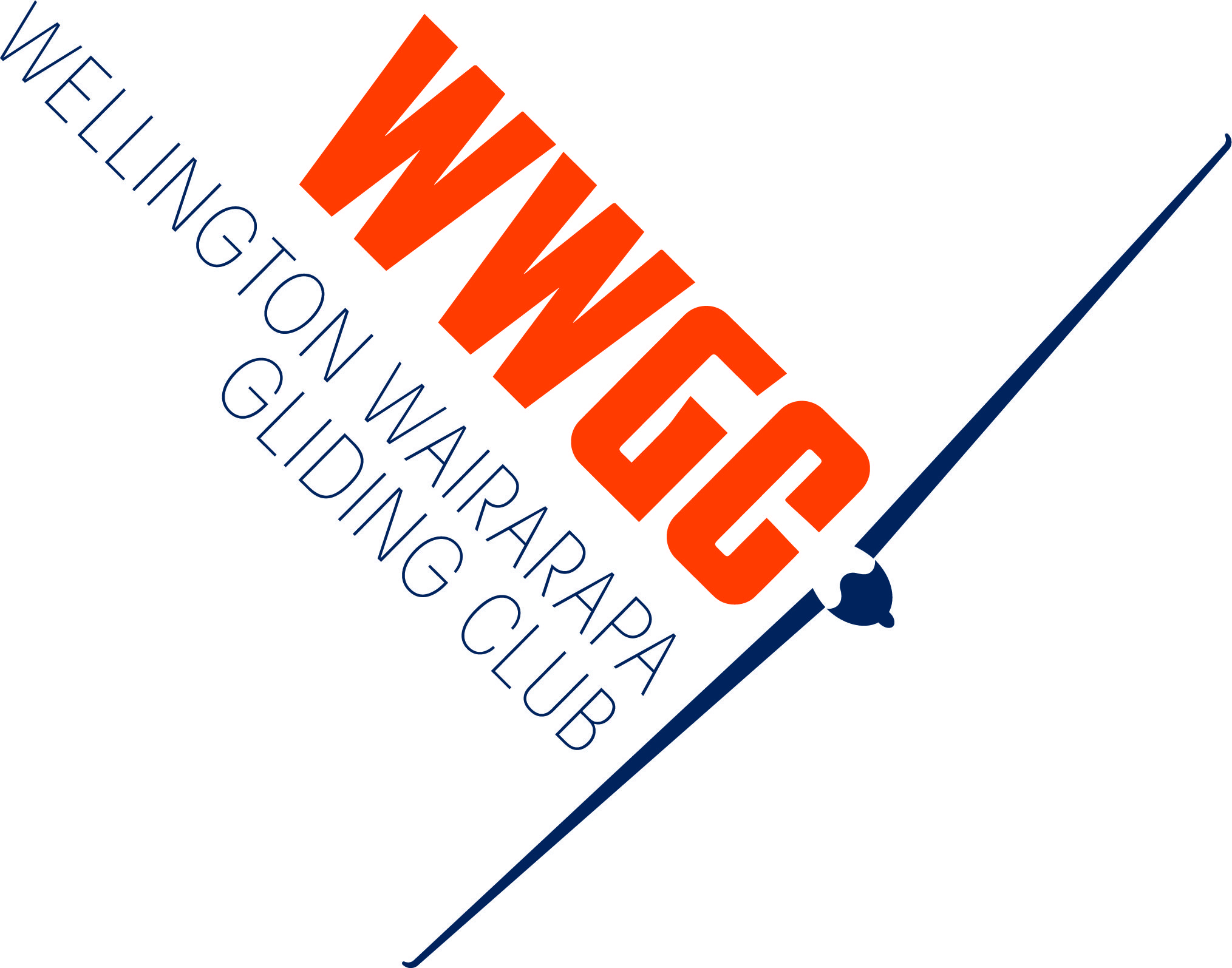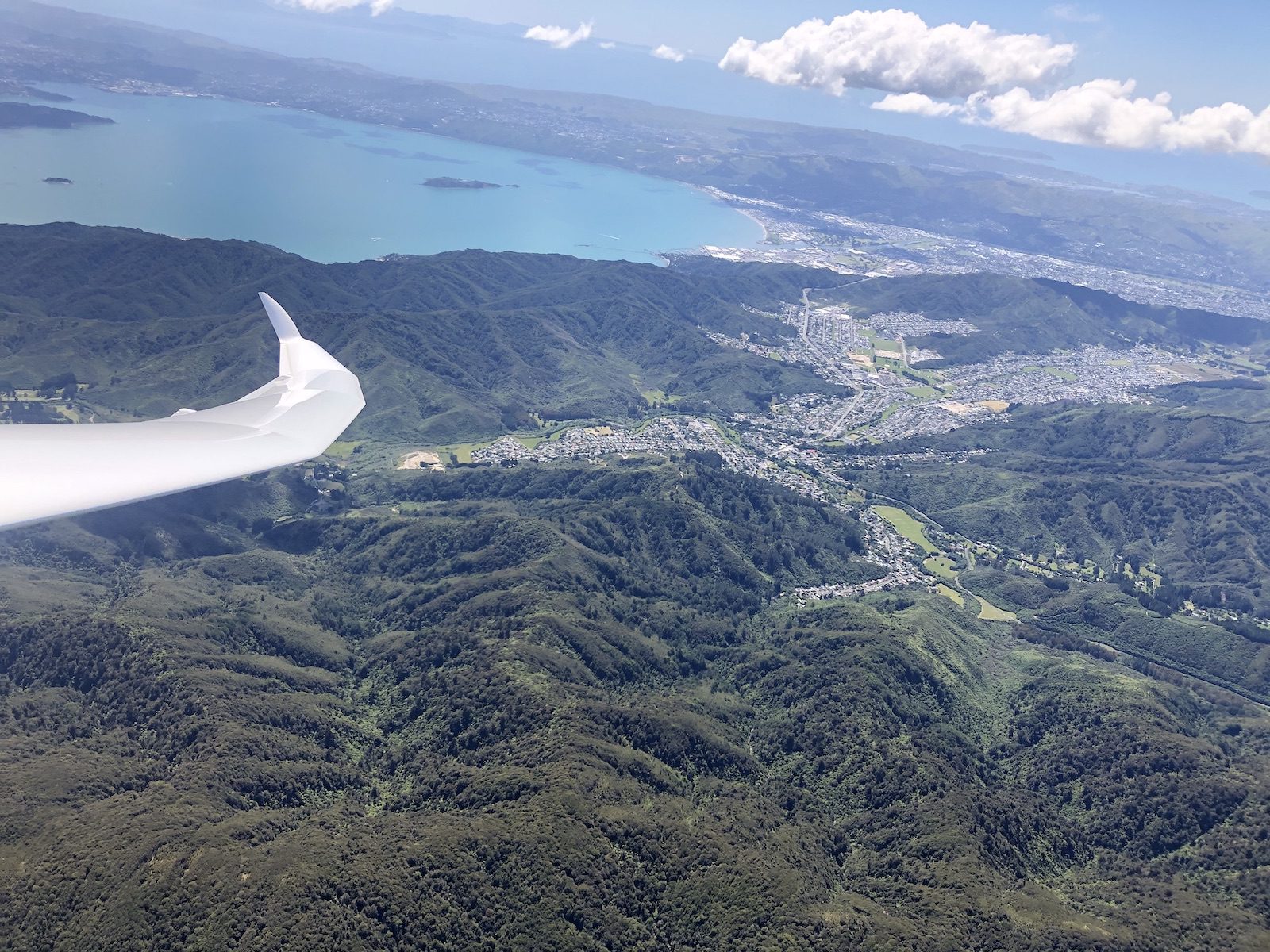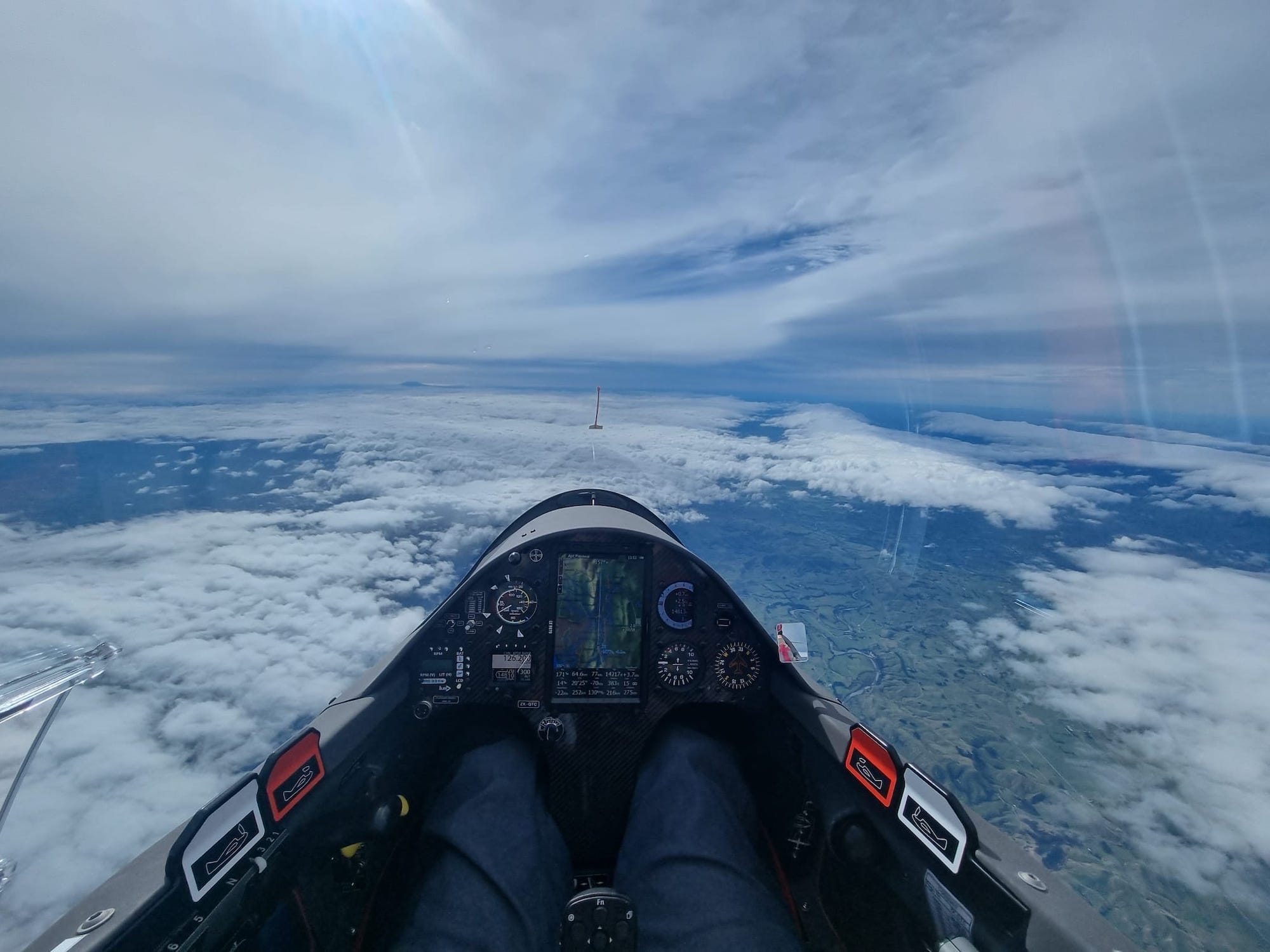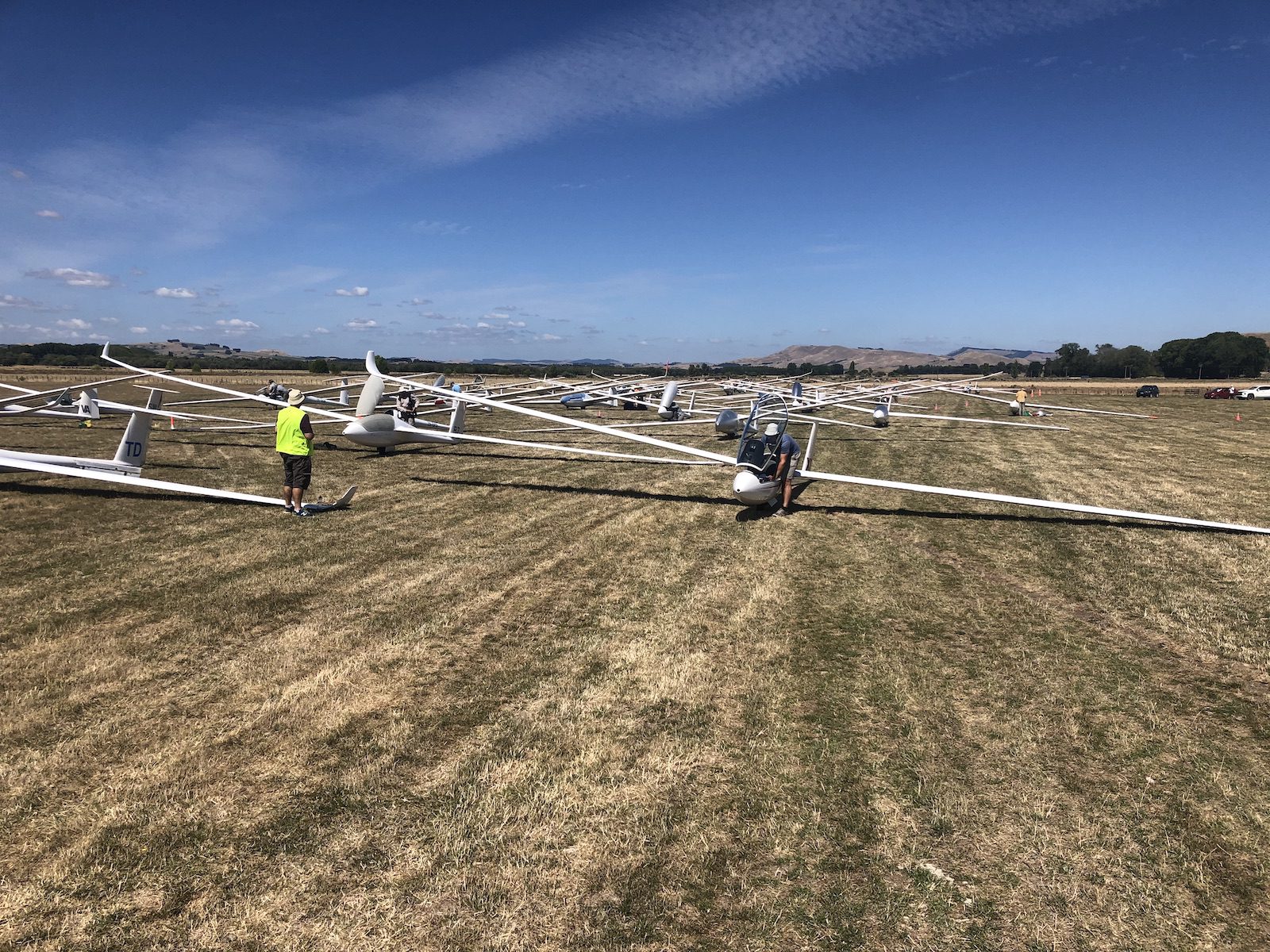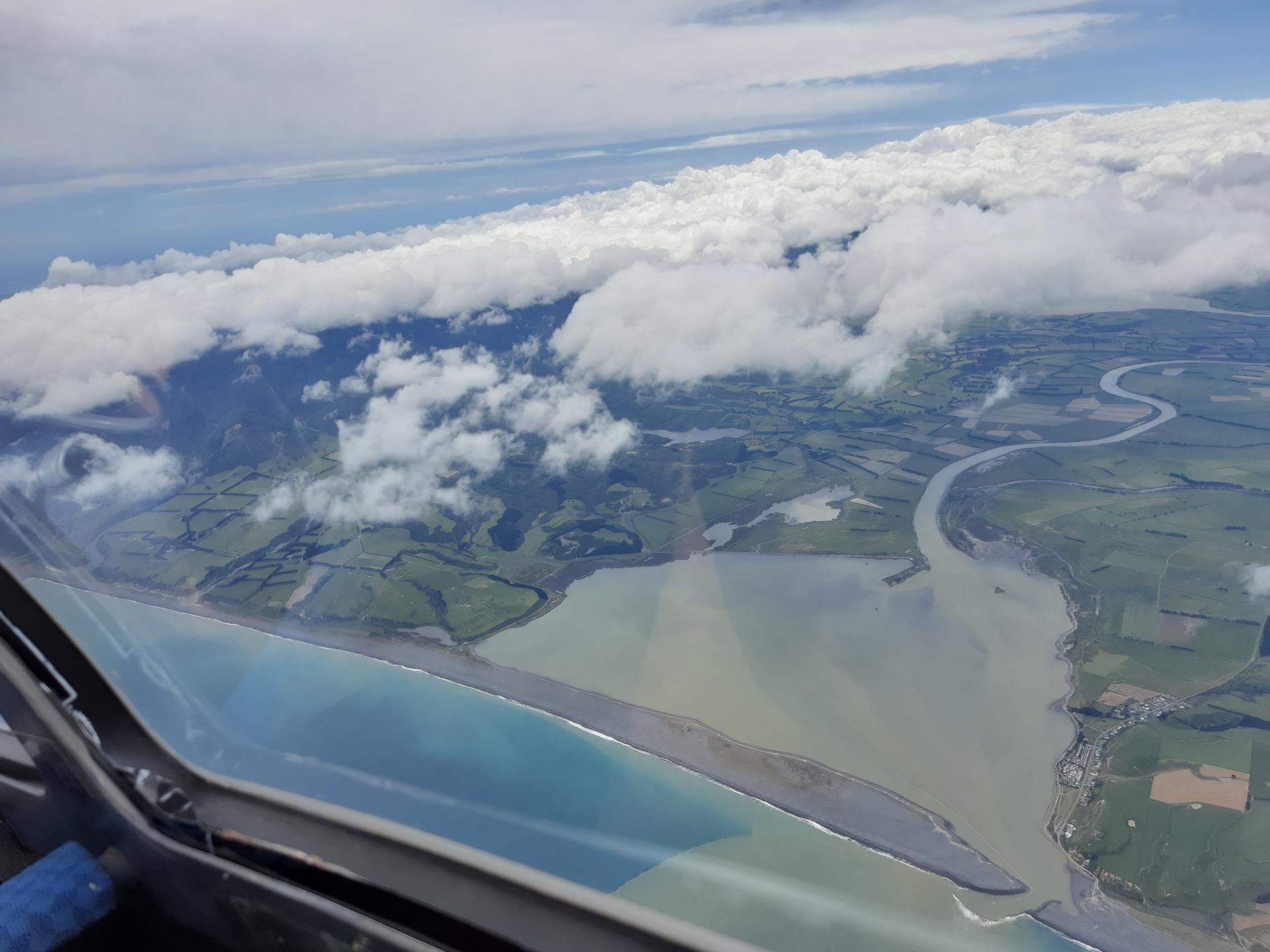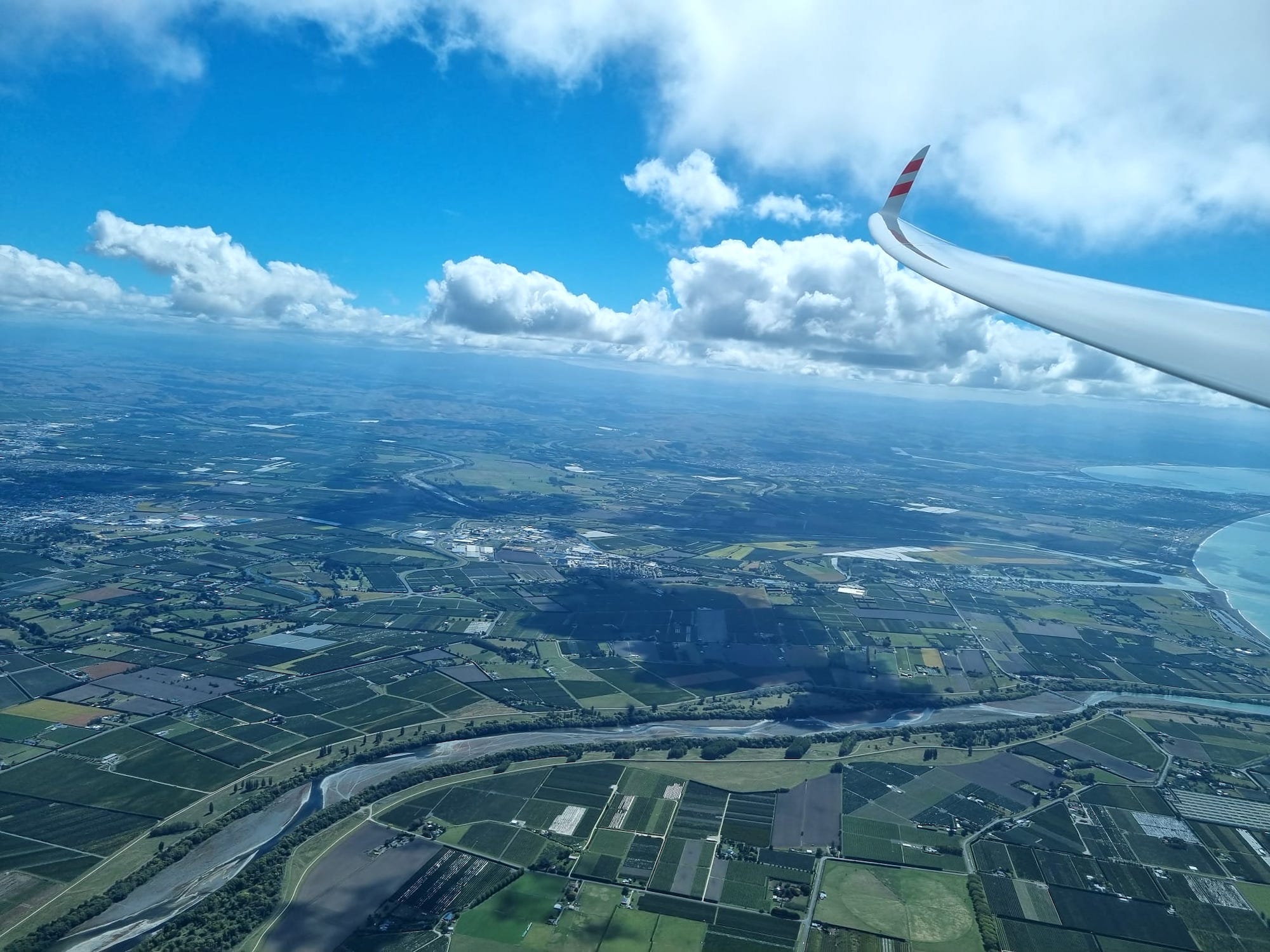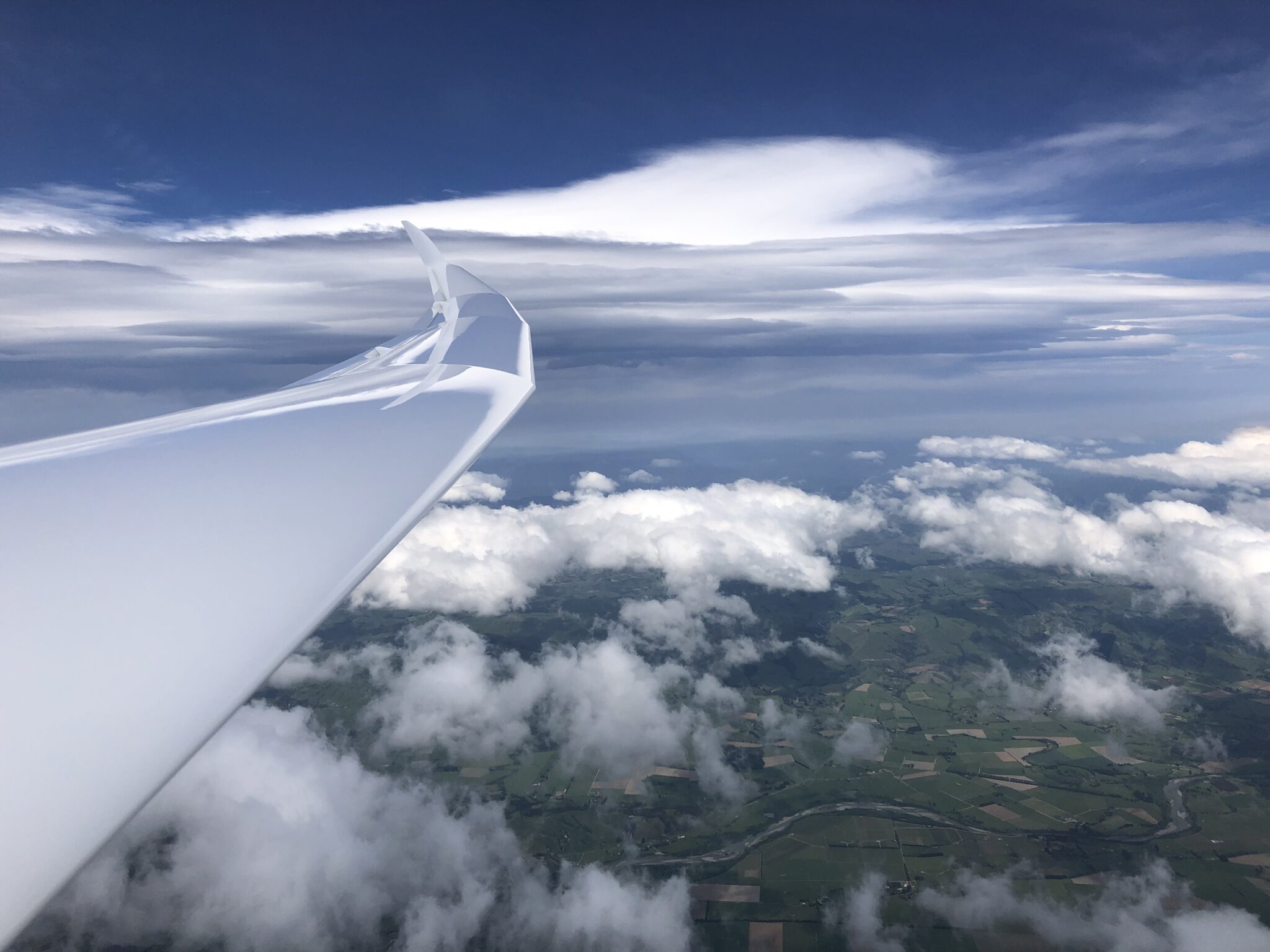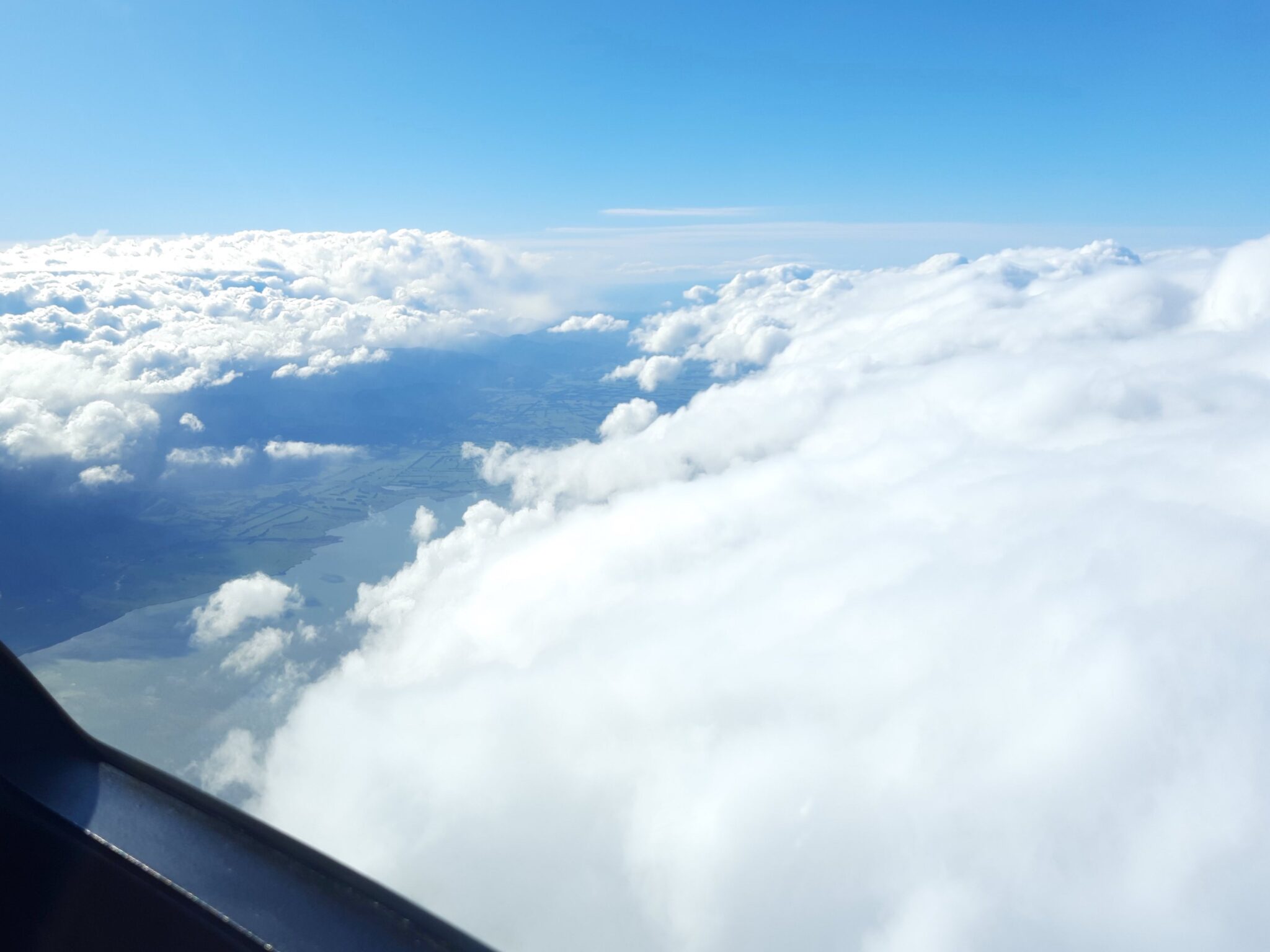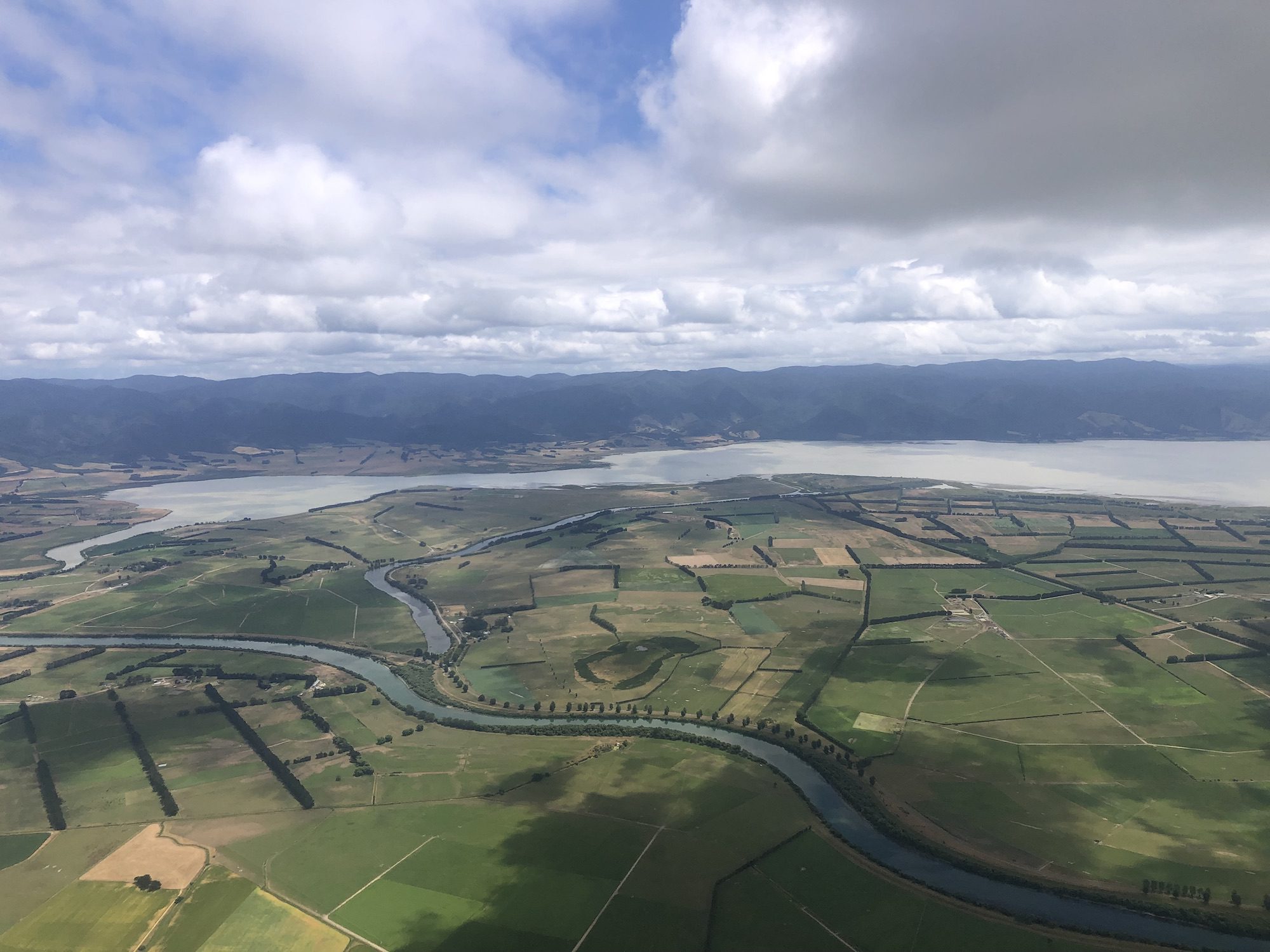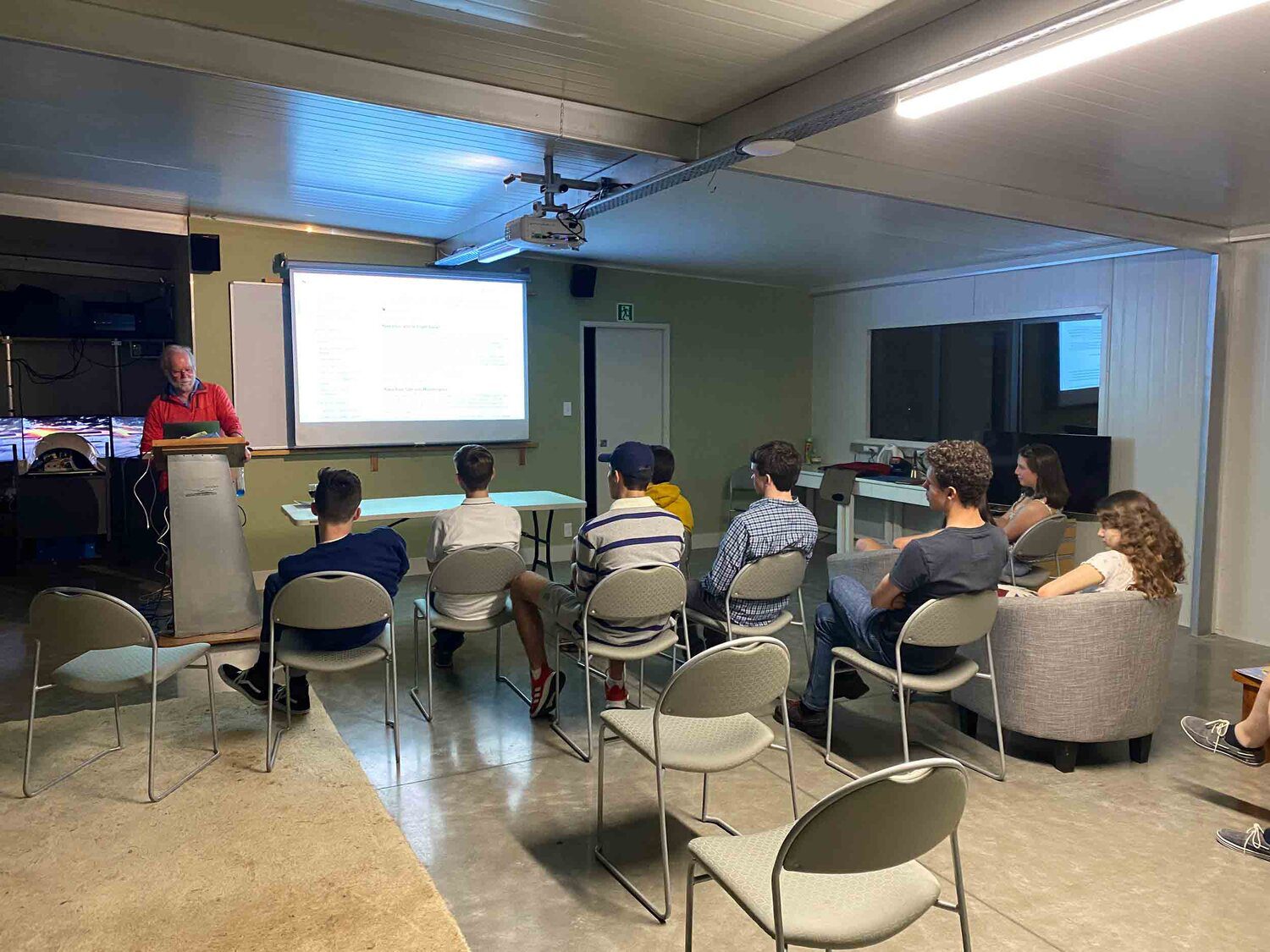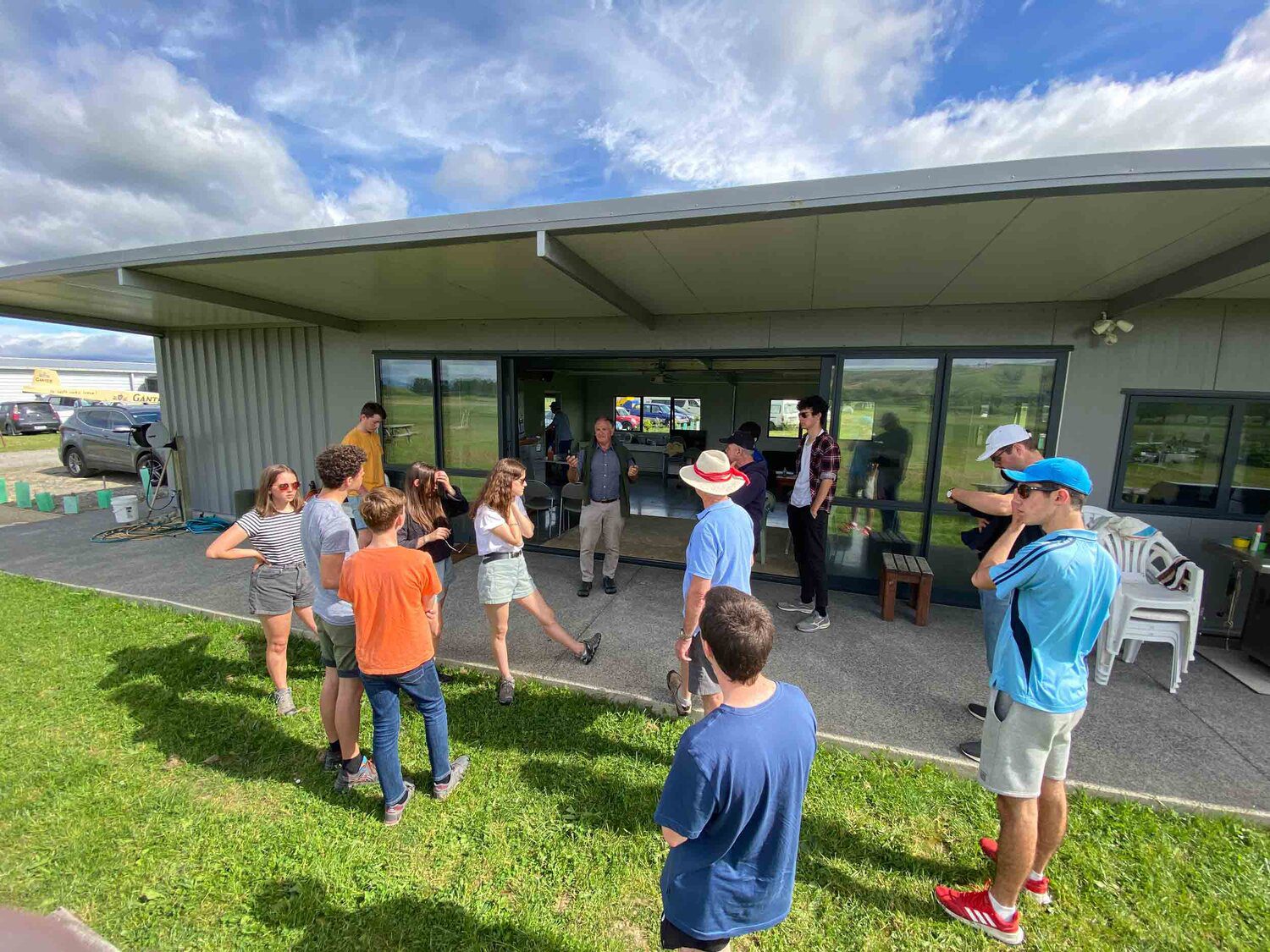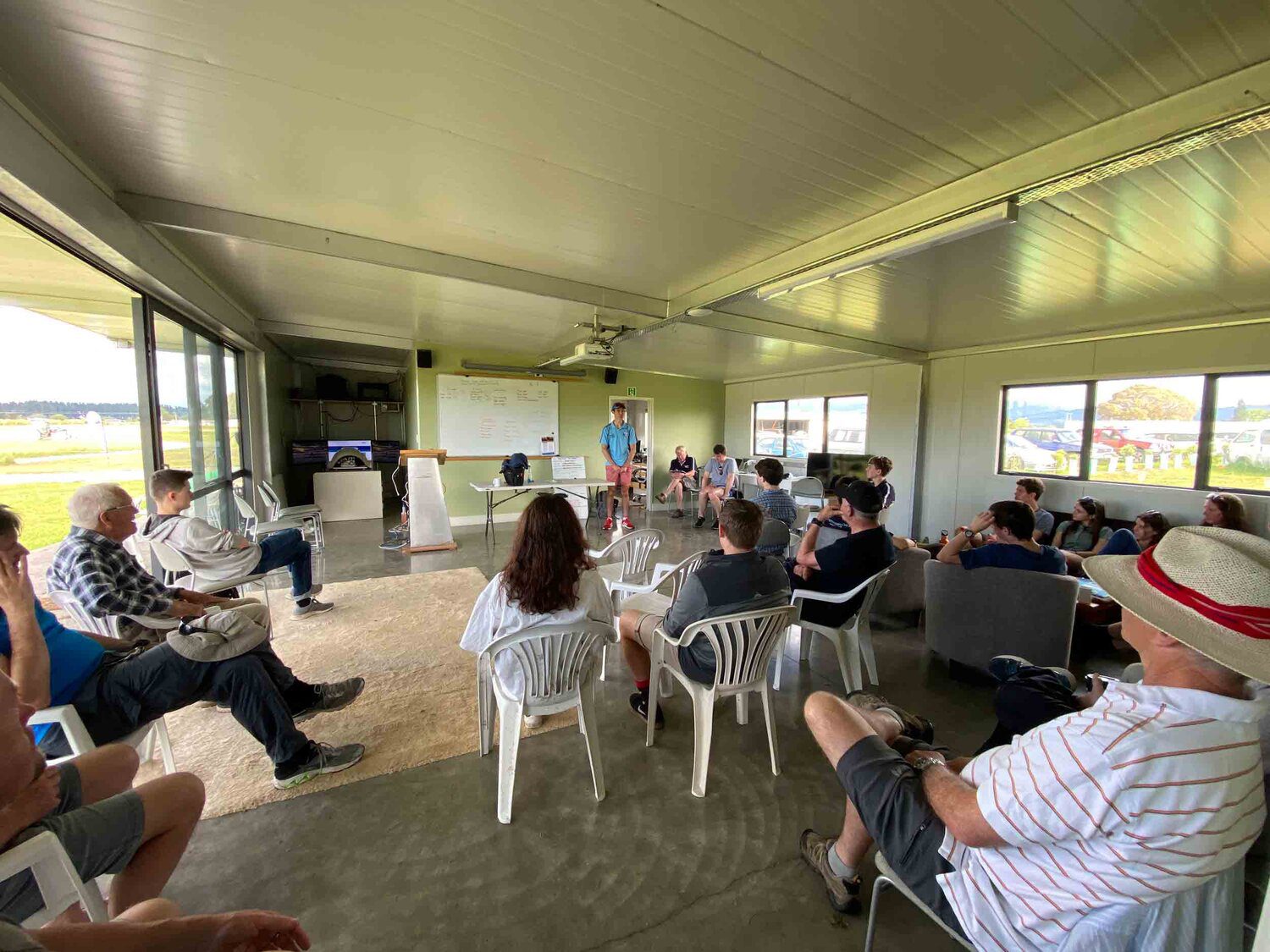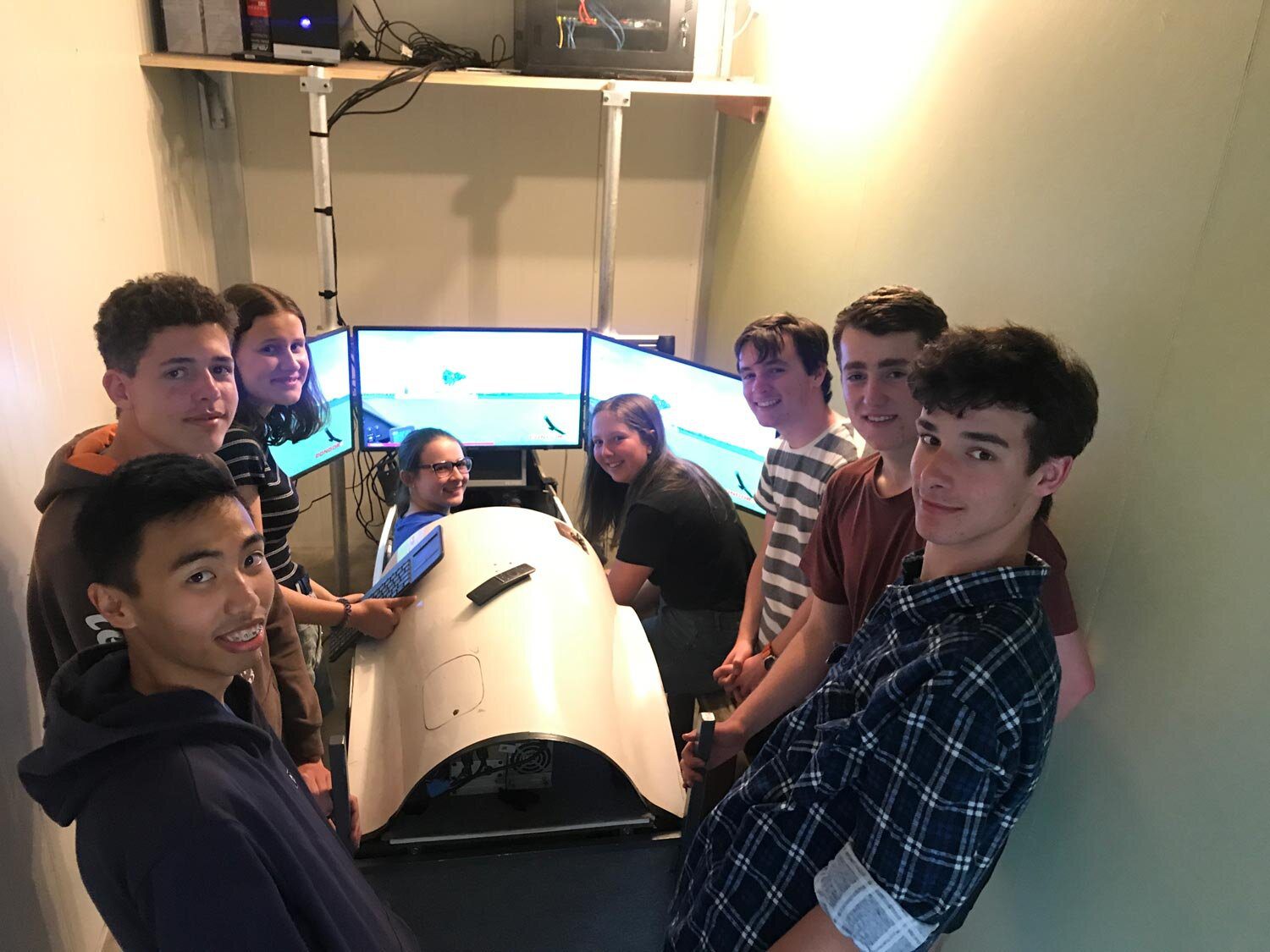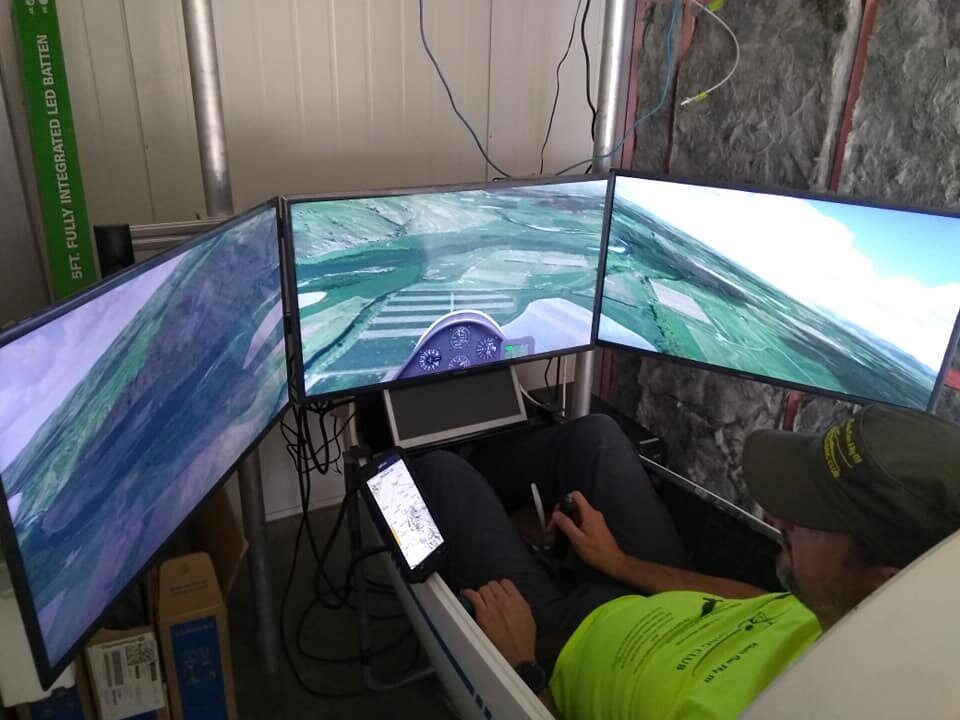Wellington Wairarapa Gliding Club

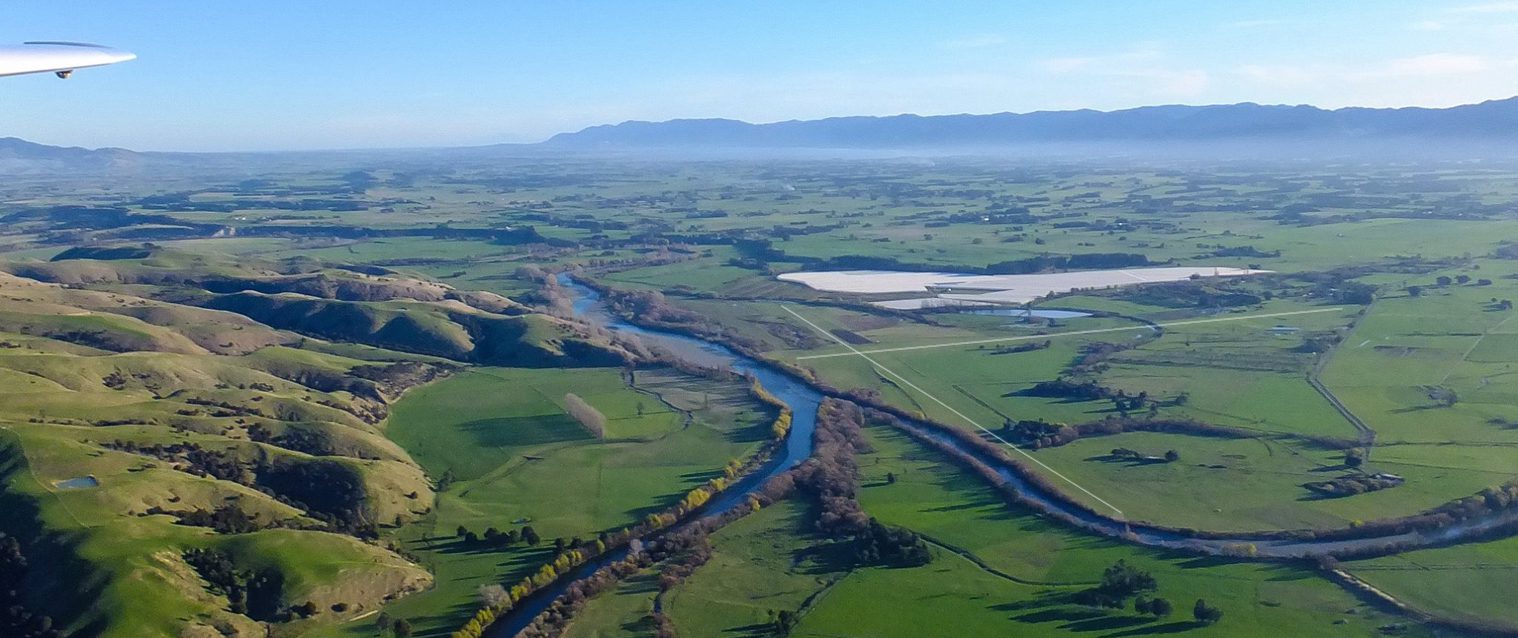
This is our club flying site at Papawai, a few km east of Greytown. The photo above is taken looking south-west, and shows the two runways as fine white lines. The large white area is an apple orchard covered with bird netting, which makes our airfield very easy to find from the air. The rivers are the Waiohine (coming from the right) joining with the Ruamahanga. It’s a very scenic area.
The Wairarapa offers many delights to the soaring pilot – whether circling at 5,000 feet under puffy white cumulus clouds or cruising at 200 kph in the silky-smooth wave at 14,000 feet. Every new day presents a different weather pattern – and a different environment to explore.
The NZ altitude record was achieved in the Wairarapa, because the wave is very strong and reasonably easy to get into. On 9 March 1968 Doug Yarrall climbed his glider to 37,288 feet above sea level. That NZ altitude record still stands. This makes the Wairarapa a great site for pilots seeking their gain-of-height award.
movie appears below - it may take a while to load
where do we fly to?
Gliders are regularly spotted in the distant corners of the Wairarapa, but you have to look up because we don’t make any noise! Turakirae, Mt Climie, Mt Holdsworth, Mt Bruce, Castlepoint, Ruakokoputuna, Mt Ross and Putangarua are some of our favourite destinations after launching from Papawai.
More advanced pilots travel even further afield, into Hawkes Bay and the Manawatu, soaring the Tararua, Puketoi and Ruahine Ranges, or perhaps finally turning for home at Waipukurau, Te Mata Peak or Kuripapango!
The airspace around Papawai is uncontrolled up to 9,500 feet, so we have a lot of freedom to move around. And with supplemental oxygen, a transponder and a clearance from Airways we can fly much higher.
launch by winch
Papawai airfield is a silent site. We launch our gliders with a specialised glider winch fitted with synthetic cable. It’s possible to achieve 6-8 launches per hour. A winch launch is brisk but not vicious. Starting with 1500 – 2000 metres of cable, we typically achieve 600 metres at release. On a day suitable for soaring this is high enough to connect with thermal or ridge lift, climb high – and travel for hundreds of kilometres.
The sketch below shows a typical winch launch. The glider starts at one end of the runway, and the winch is at the other end. The glider is attached to the winch cable. When everyone is ready the winch pulls the glider forward. The glider takes off at about 80 kph, climbs gradually at first, then more steeply. Near the top the cable is automatically released and the glider is airborne. The cable is wound into the winch, and then pulled out along the ground to connect to the next glider in the line.
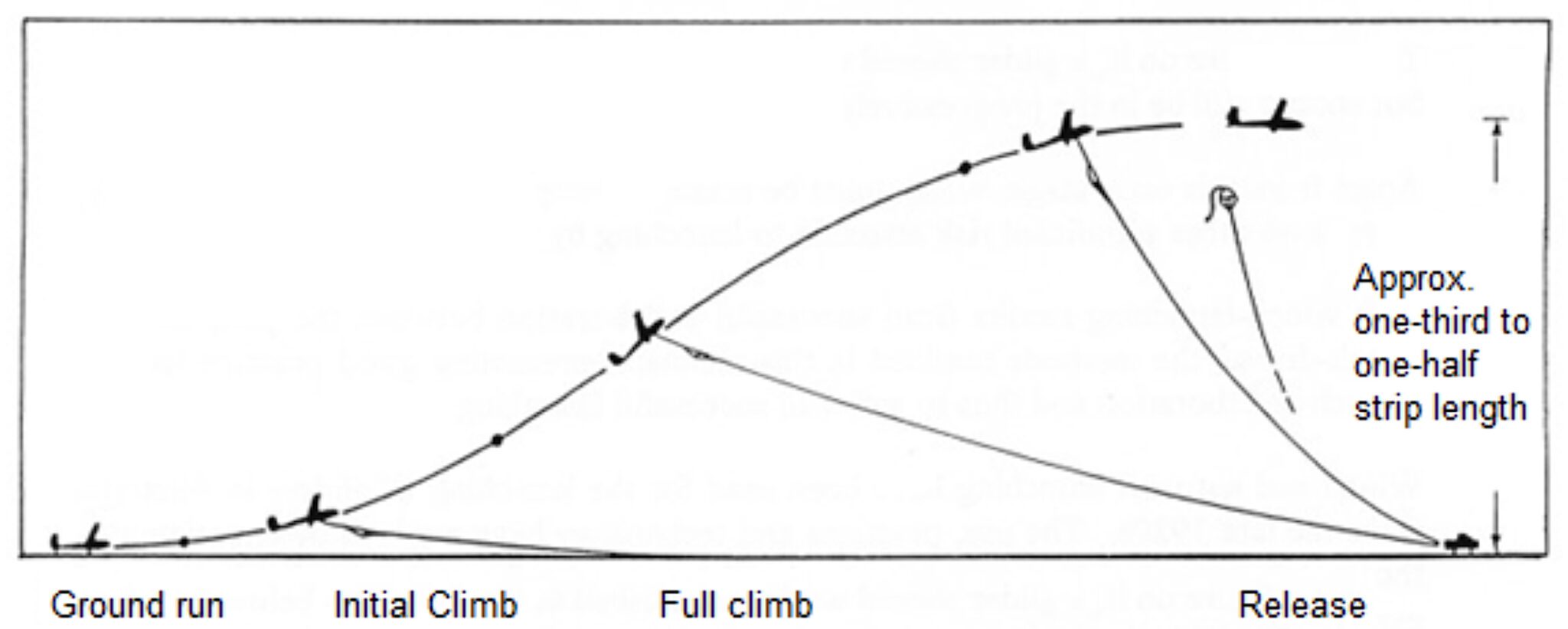
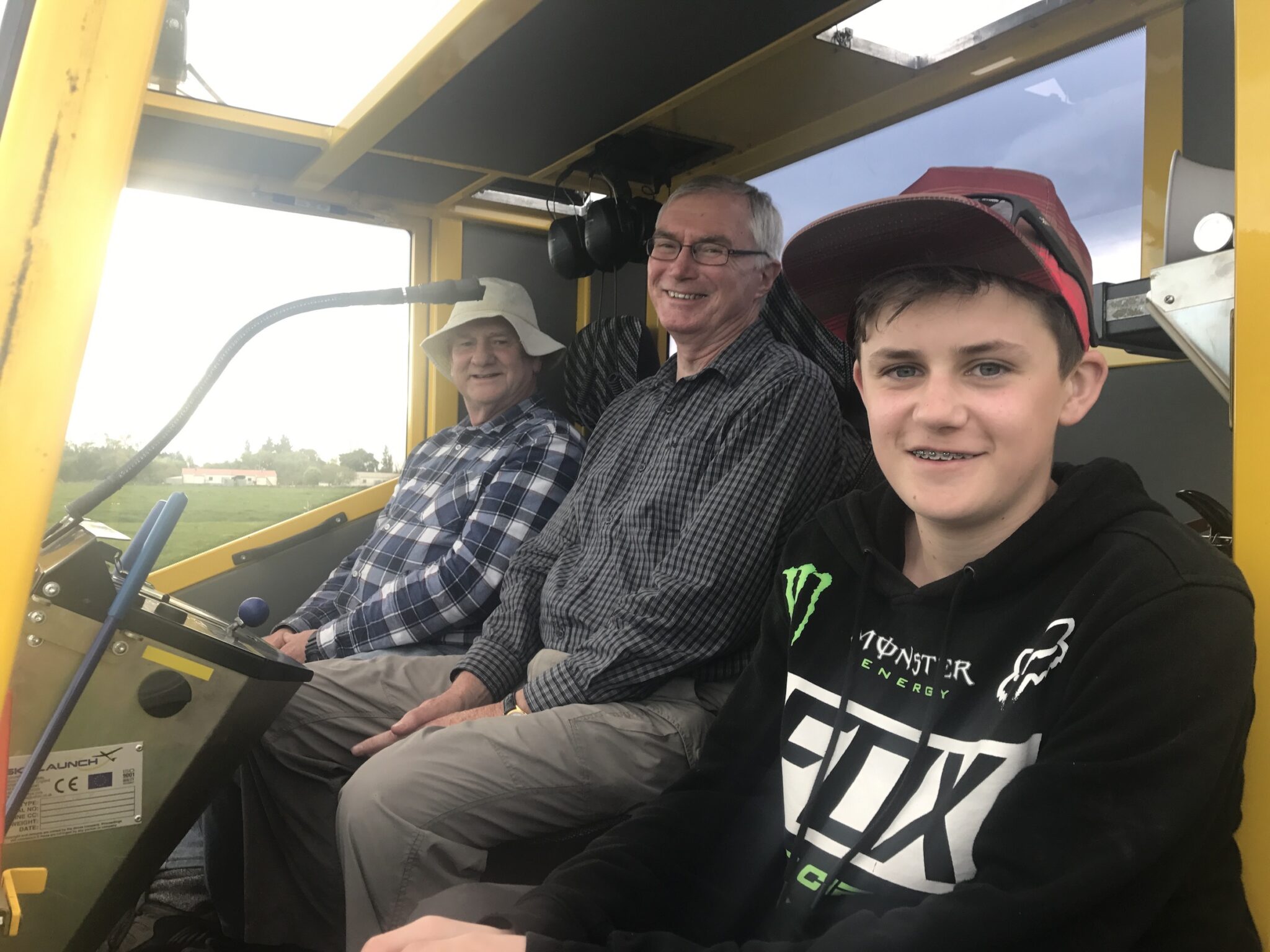
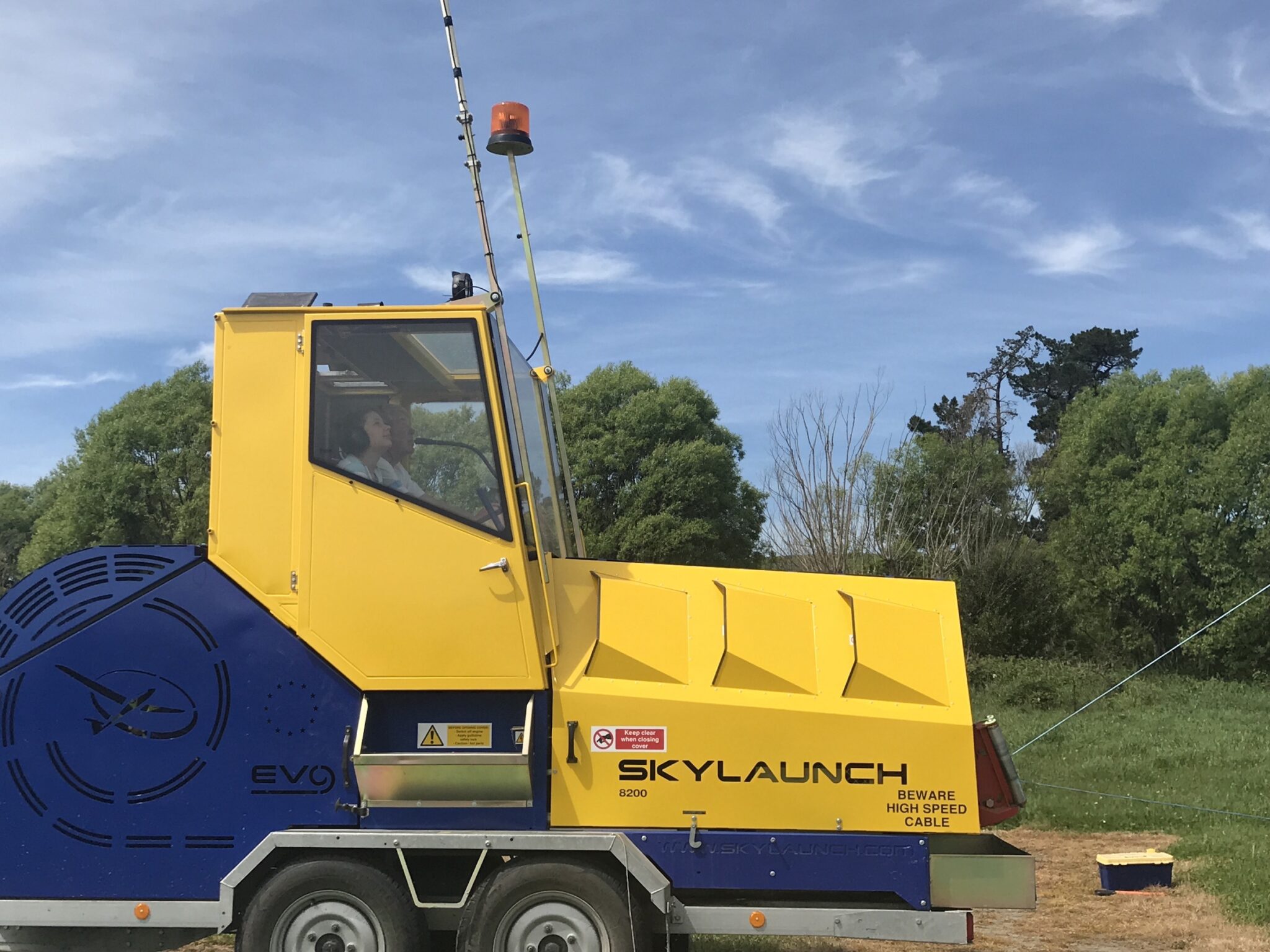
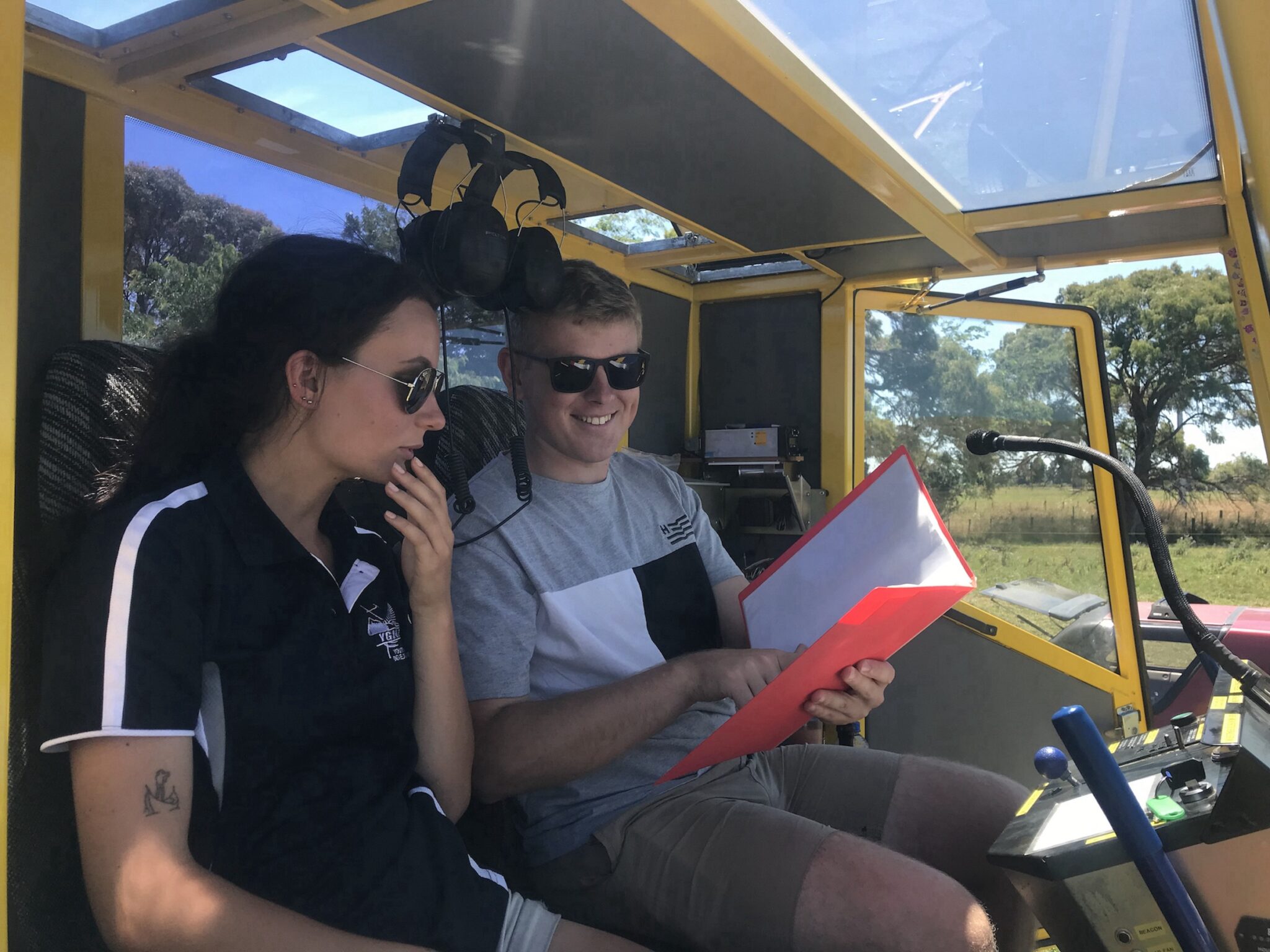
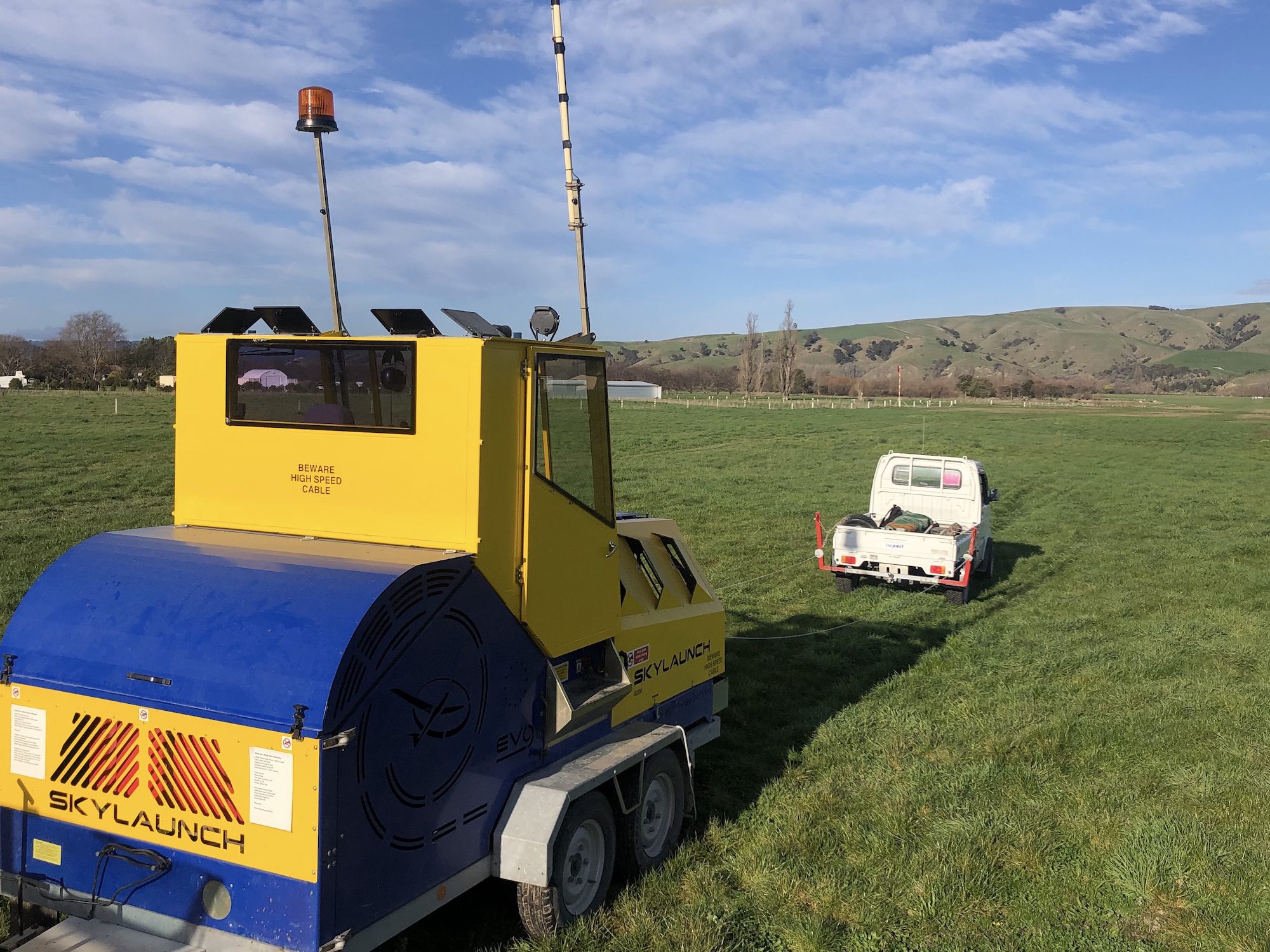
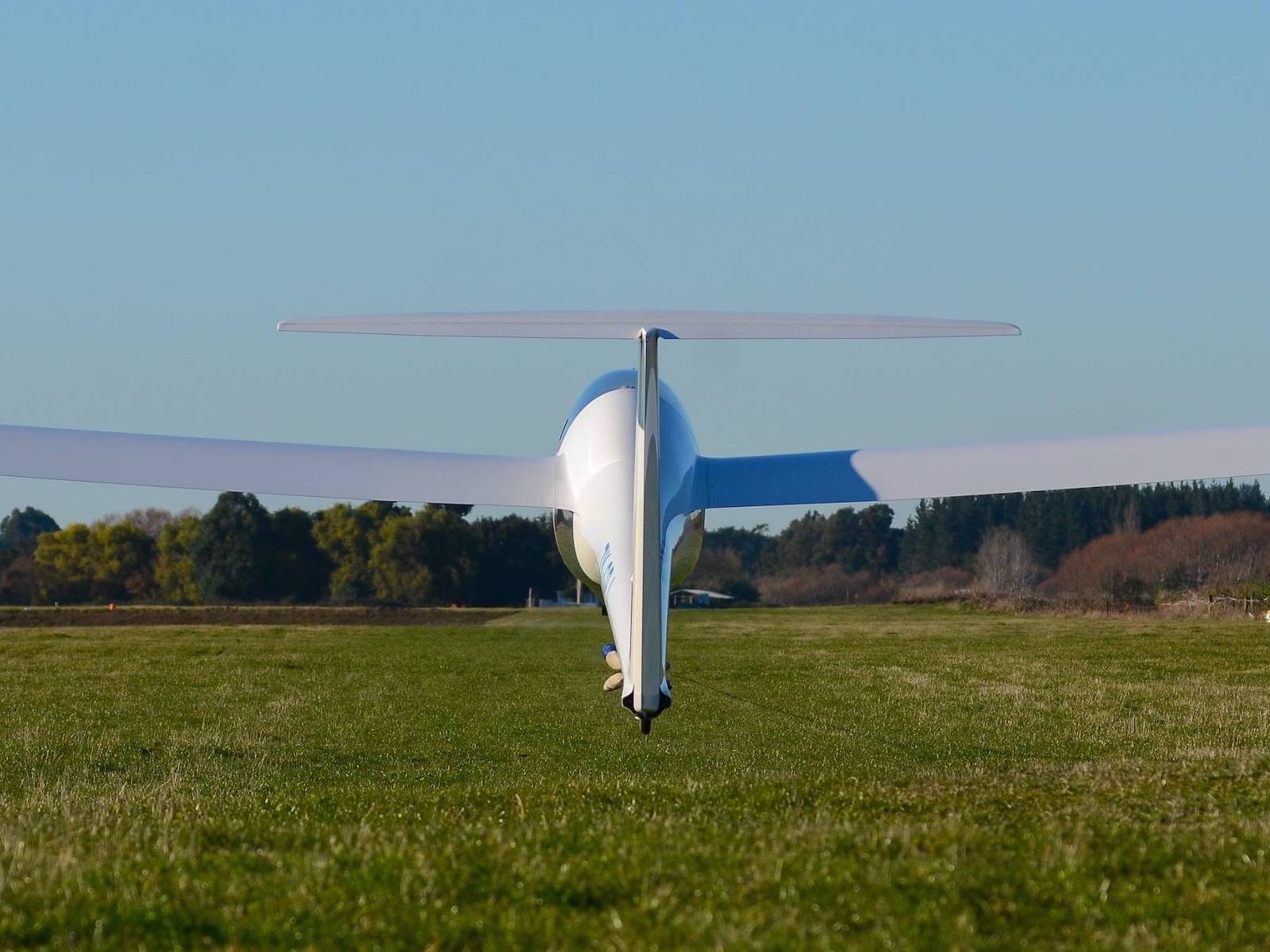
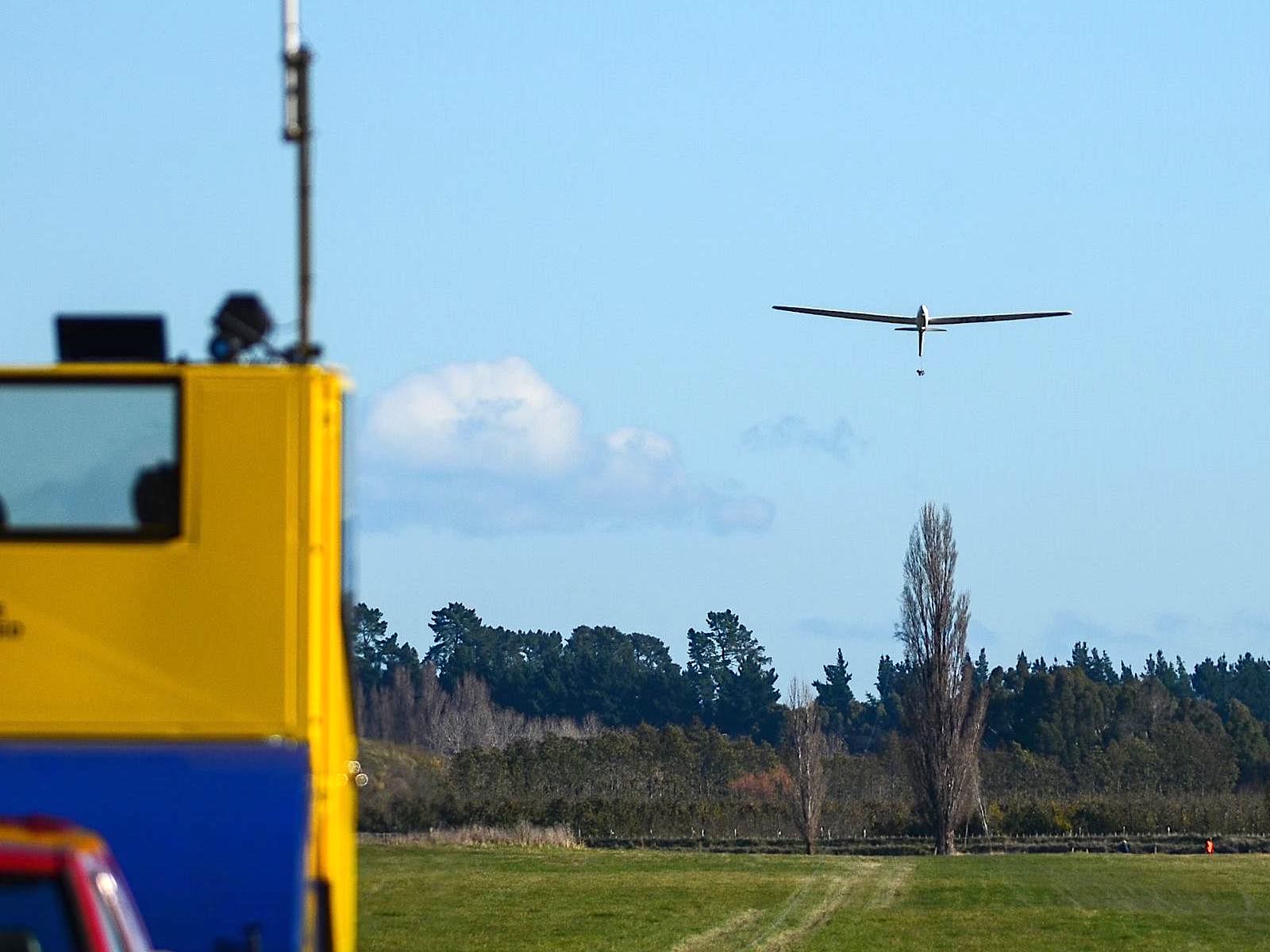
glider fleet
The club operates two DG-1000 gliders and two single-seat gliders. Other members buy their own gliders, often in a syndicate to share the cost.

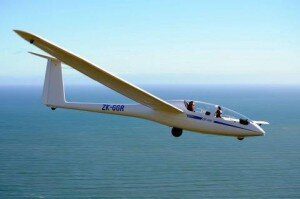
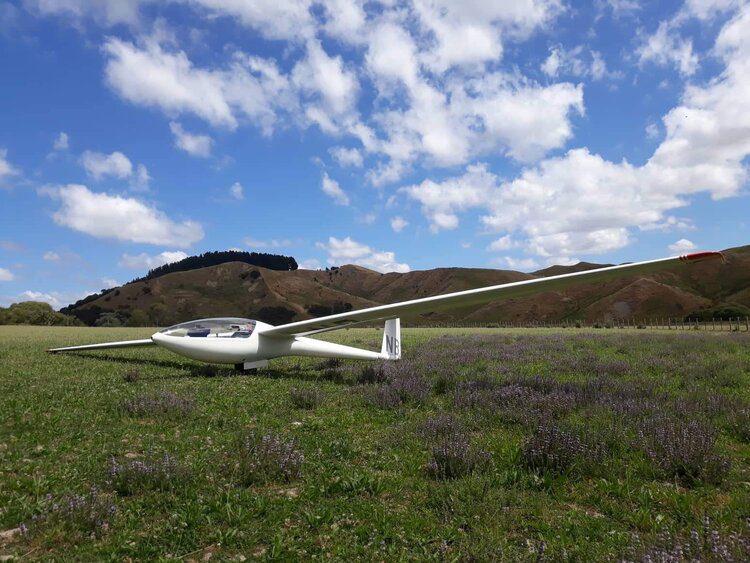
There are also many privately-owned gliders, both old and modern. Here is a sample.
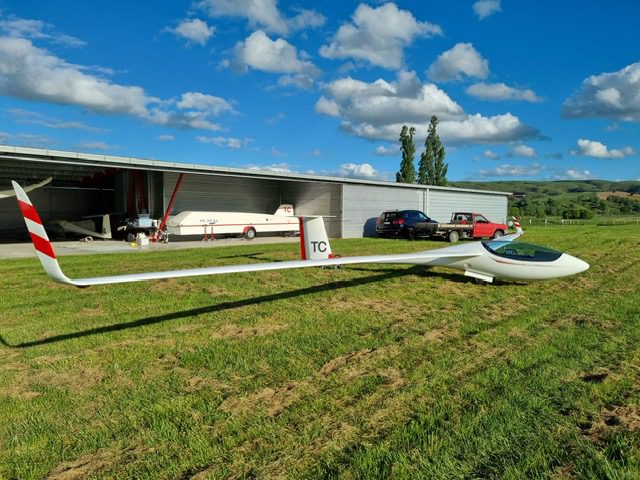
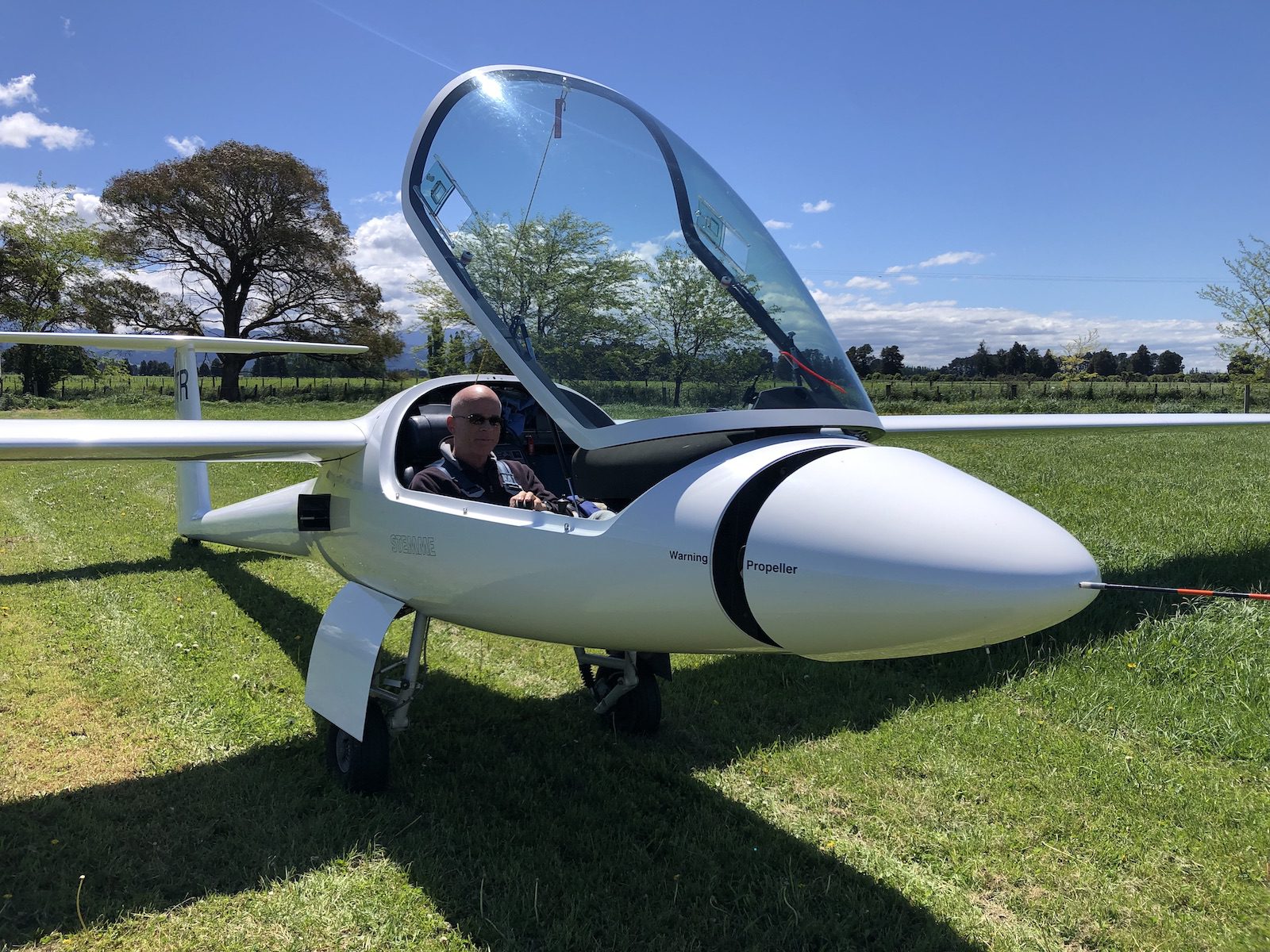
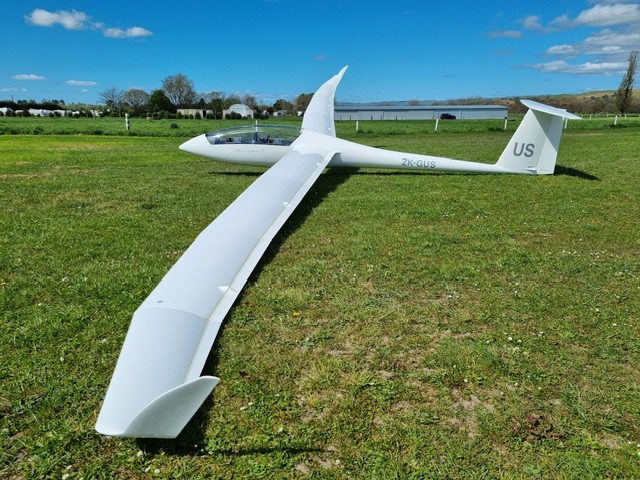
training centre
Our purpose-built training centre has seating for 50 persons, and includes an office, briefing room, flight simulator, kitchen, barbecue and ablution facilities.
We have a full briefing every flying day at 10:00 am. We also run 1-day, 3-day and 5-day flight training courses. Plus there’s our winter lecture series for those keen to develop their knowledge and understanding of aerodynamics, meteorology, aircraft structures, human factors, aviation law, navigation, task planning and radio communication.
come for a flight
Our club training flights are made in modern DG-1000 two-seat gliders. Put yourself in the front seat – the view is fantastic! The instructor in the back will guide you silently around the sky, then back for a gentle landing. Pilots remain within gliding distance of the airfield until rated for cross-country flight.

A competent soaring pilot learns to handle the flying controls very accurately, and soon develops a finely-tuned sense of the aircraft and the environment. This subtle skill is widely recognised by airline pilots and flight schools as excellent grounding for a career in aviation.
Purchase a voucher for a short trial flight, or spend a day on our gliding field, take a few flights, hang out at the launch point, and see what glider pilots do.
accommodation
If you are coming to visit there are a number of options for accommodation.
If you want to stay on site, or just visit, there is electricity, running water, flush toilets, showers, a kitchen and wi-fi access. You don't have to rough it! Wheel-chair access is straight-forward.
-
check in at a local motel in Greytown, about 4 km away
-
there are plenty of places close by listed on Airbnb
-
bring a tent and stay on site (camping fees apply)
-
there is room for caravans and camper vans (fees apply)
-
the club has a few simple caravans for rent
Please check in with the caretaker if you wish to stay on site overnight. Contact details here.
